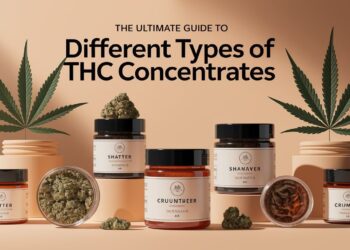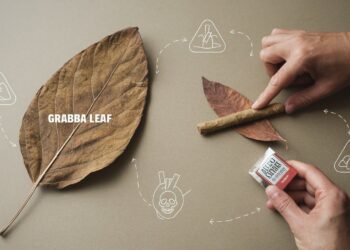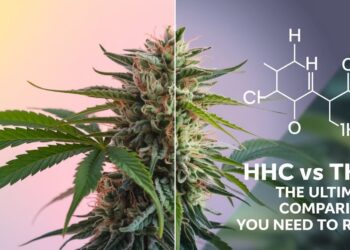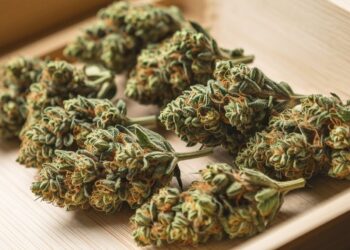Ever wonder why some cannabis buds look like a rainbow? Those deep purples, bright oranges, and frosty greens aren’t just eye candy they reveal a lot about the bud’s quality, potency, and how it was grown.
Many people assume good weed should always be green. That’s a myth. In truth, color can be a helpful clue when spotting top-shelf flowers versus mid or low-grade options.
In this guide, I’ll explain what each color means, backed by real experience from years in the cannabis industry. I’ve handled thousands of strains and seen how color relates to freshness, genetics, and growing conditions.
We’ll break down what causes purple buds, what orange hairs do, and which colors to be cautious of.
By the end, you’ll be able to judge quality with just your eyes, making your next purchase smarter and more satisfying.
The Science Behind Cannabis Colors
Ever notice how some buds look like they belong in an art gallery? There’s actual science behind those colors. Let me break it down for you.
Natural Pigments That Create Color
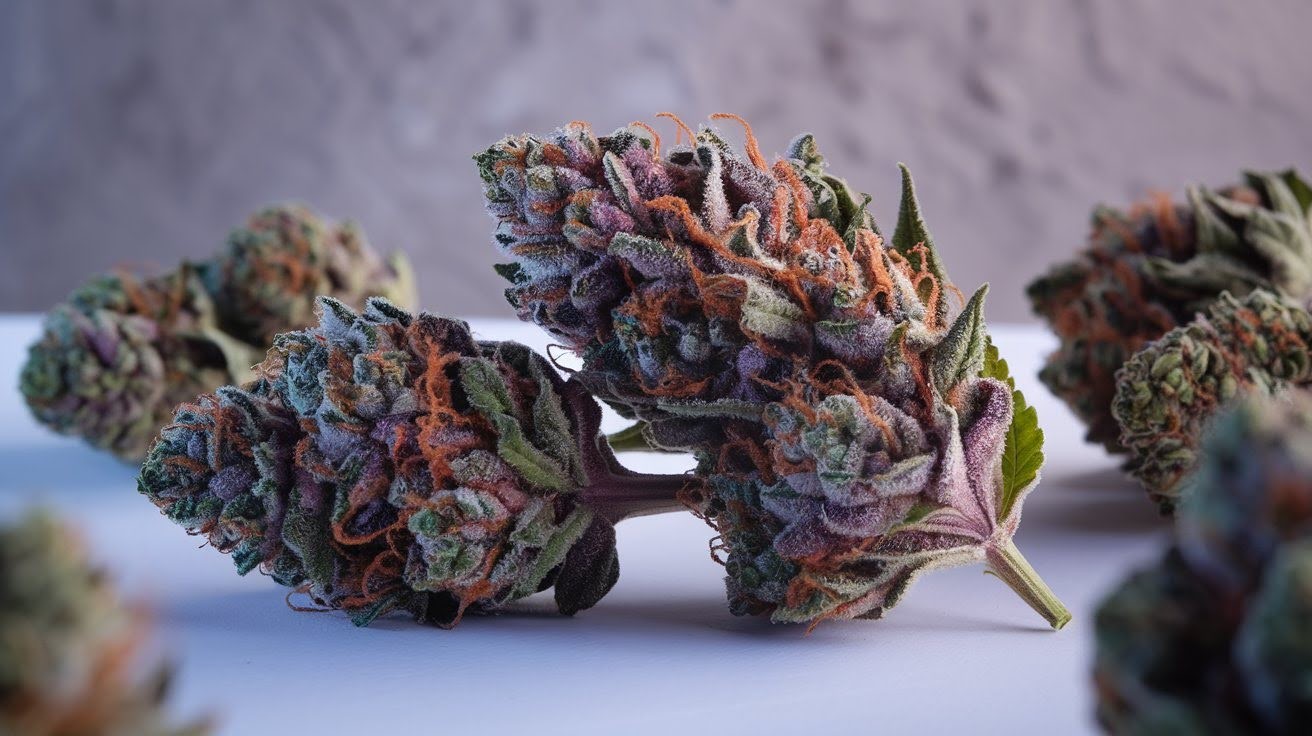
Four main pigments control what you see in your cannabis: Chlorophyll is the green machine. This pigment helps plants make food from sunlight. It’s why most weed looks green.
When chlorophyll breaks down, other colors start to show through. Anthocyanins create the showstoppers. These pigments make purples, blues, and reds.
Scientists have found over 500 different types. They’re the same compounds that make blueberries blue and red cabbage red. Flavonoids handle the yellow tones. Don’t let the name fool you.
They do more than add color. They also boost flavor and smell. Carotenoids bring warm colors. Think reds, yellows, and oranges. These are the same pigments in carrots and tomatoes.
What Triggers Color Changes?
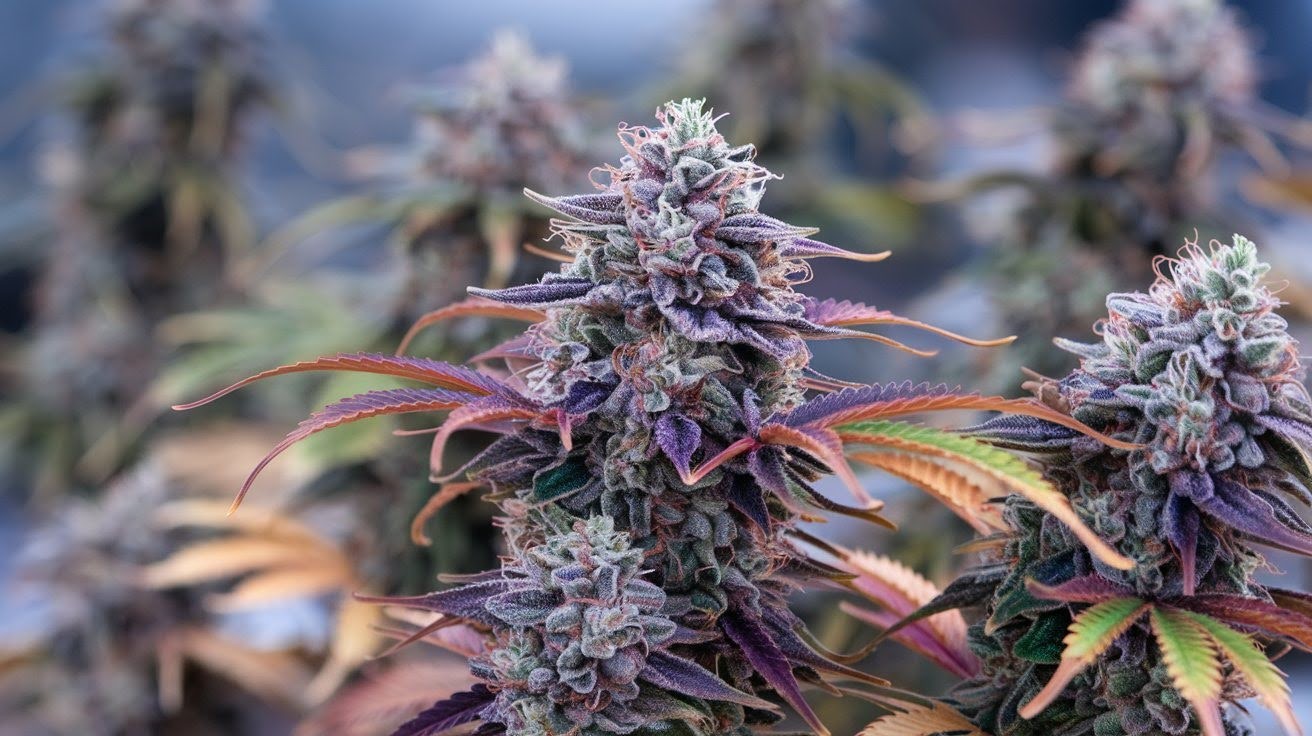
Temperature plays a huge role in color development. Cool nights between 6070°F make anthocyanins kick into high gear. That’s why outdoor-grown grows often show more purple.
Plant age matters too. As your bud matures, chlorophyll production slows down. Other pigments finally get their chance to shine through the green.
Soil pH affects the final look. Acidic soil tends to create reds and pinks. Neutral pH gives you purples. Alkaline conditions can push colors toward blue.
Nutrients also play a part. Low phosphorus levels can trigger red and pink tones. It’s the plant’s way of dealing with stress.
Here’s the key point: Most color changes happen naturally. Good growers work with these factors instead of fighting them.
Cannabis Color Dictionary: What Each Hue Reveals About Your Bud
Think of cannabis colors like a secret code. Each shade tells you something different about what you’re looking at.
Green Variations
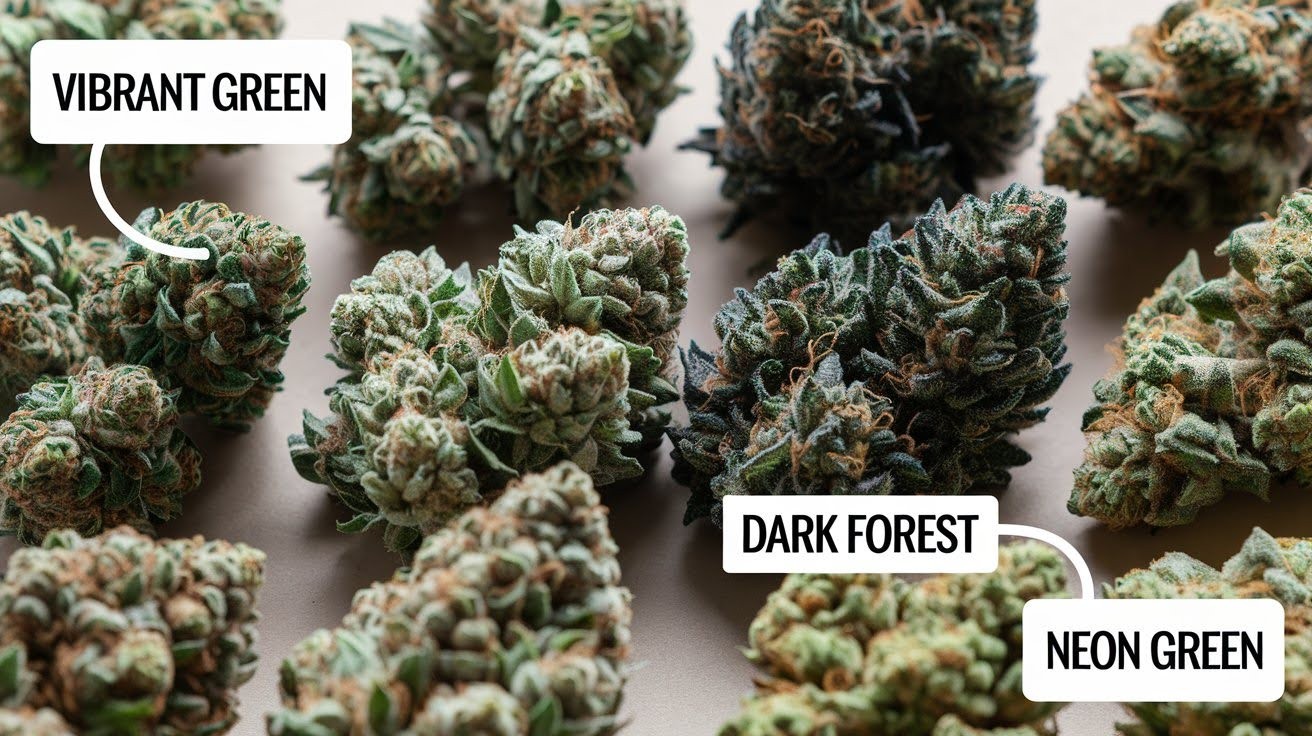
Vibrant green means everything’s working right. The plant has healthy chlorophyll levels and gets proper nutrition during growth. Light or pale green can mean two things.
Either the plant didn’t get enough nutrients, or it’s just genetics. Some strains naturally grow lighter. Dark forest green usually signals high nitrogen. This happens during vegetative growth when plants need lots of food to build leaves and stems.
Neon green often points to sativa genetics. It can also mean specific growing conditions were used. This bright color isn’t a bad sign.
Purple Cannabis
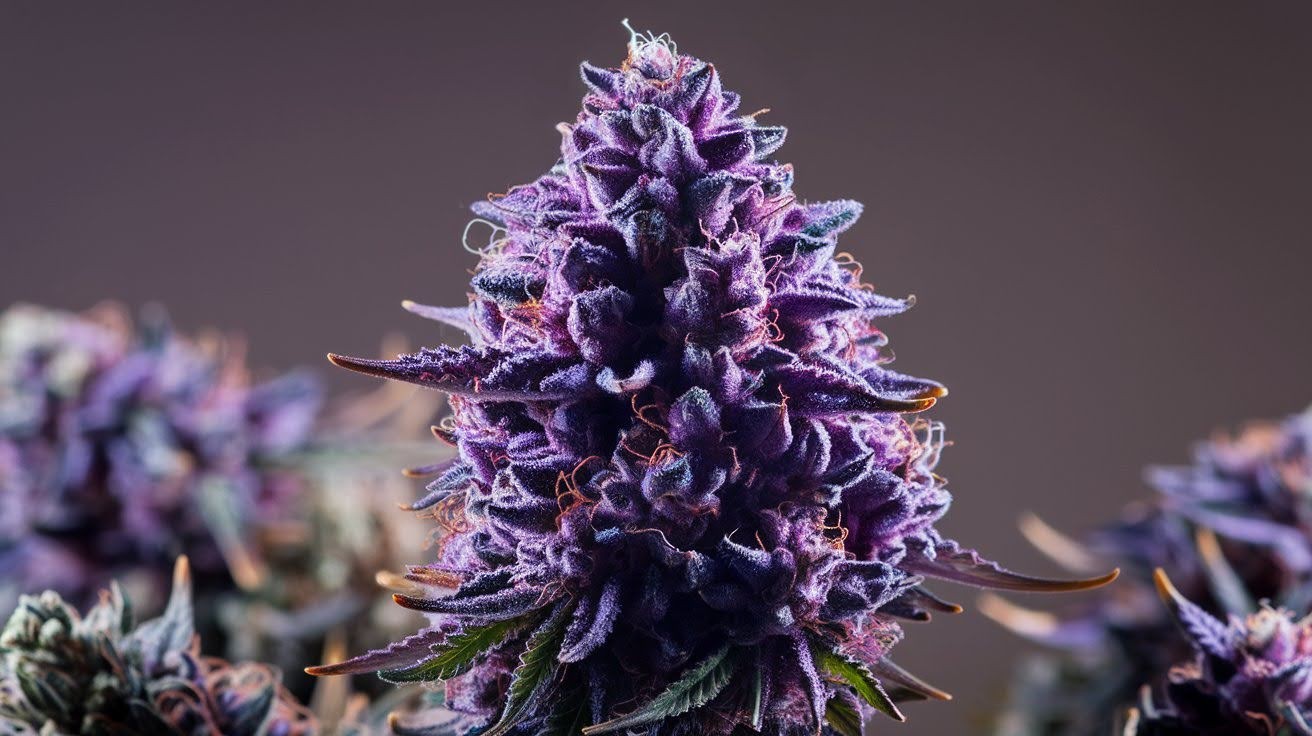
Purple bud means the plant has special genetics. These anthocyanin genes get turned on by cool temperatures during flowering. Look for deep, even purple throughout the bud.
Patchy coloring might mean uneven growing conditions. Consistent color usually means better quality. Popular purple genetics include Granddaddy Purple and Purple Urkle. These strains pass down their color genes to other plants.
Purple often comes with grape and berry flavors. The same compounds that create color also affect taste. Remember: Purple develops during the flowering stage as plants mature.
Blue Cannabis
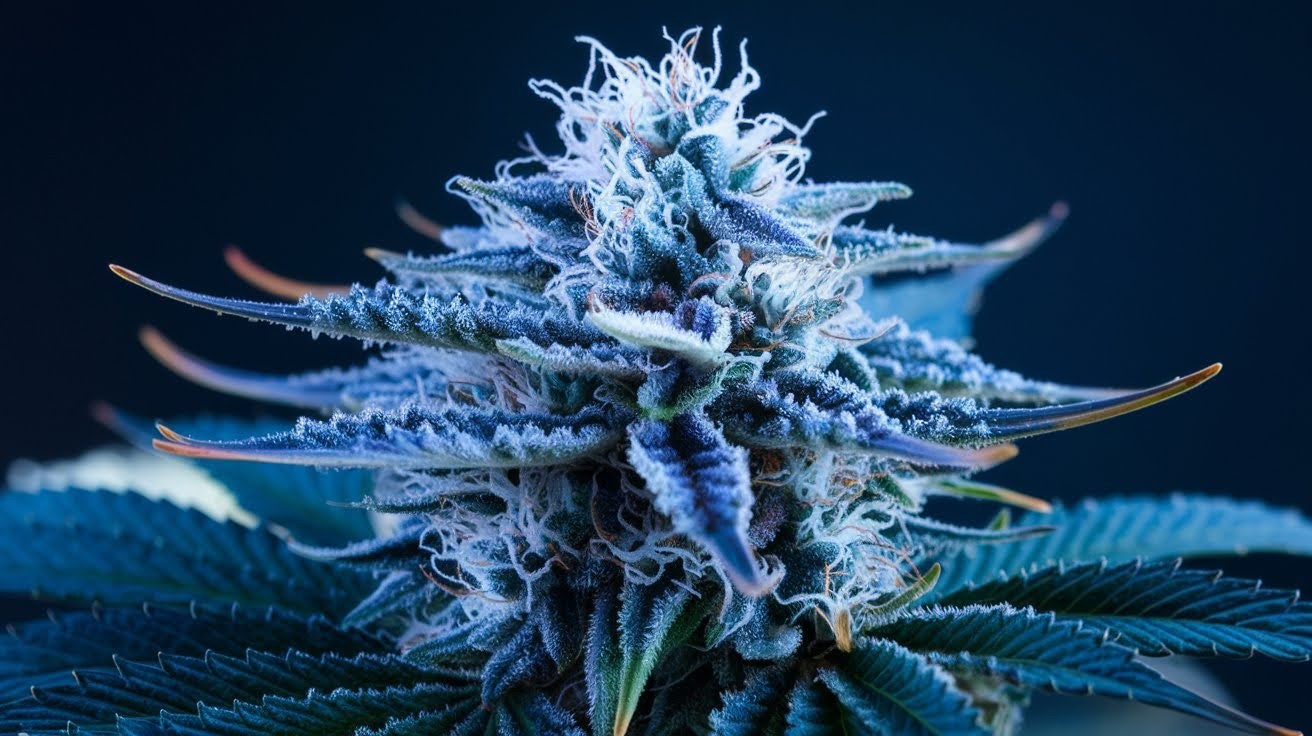
Blue cannabis is like finding a four-leaf clover. It needs specific anthocyanin types plus perfect growing conditions. You won’t see this color often. Natural blue happens rarely, even with the right genetics.
Blue Dream and Blueberry genetics can show blue traits. These classic strains carry the genes needed for blue coloring. But even then, it’s not guaranteed.
Look for even blue distribution across the bud. Patchy blue might mean growing problems. Consistent blue color suggests premium genetics and skilled growing.
Red and Pink Cannabis
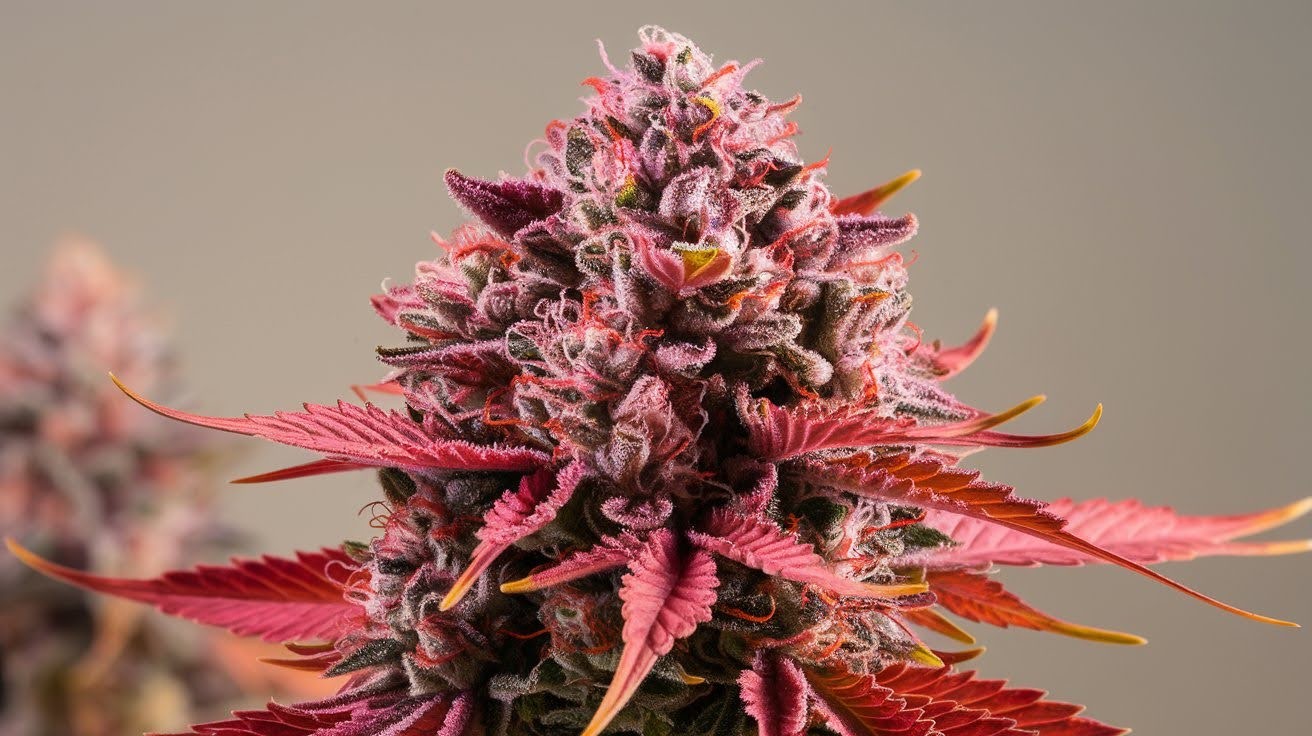
True red cannabis is the holy grail of colors. It comes from rare anthocyanin expression and top-tier genetics. But watch out for fake reds. Some red coloring comes from phosphorus problems, not good genetics. Healthy red looks vibrant and alive.
Pink varieties like Pink Runtz show unique genetics. These strains mix different anthocyanin types to create pink shades. Here’s how to tell good red from bad: Healthy red looks rich and even. Stress-induced red looks dull and patchy.
Red and pink are the rarest natural cannabis colors. Finding them means you’ve got something special.
Black Cannabis
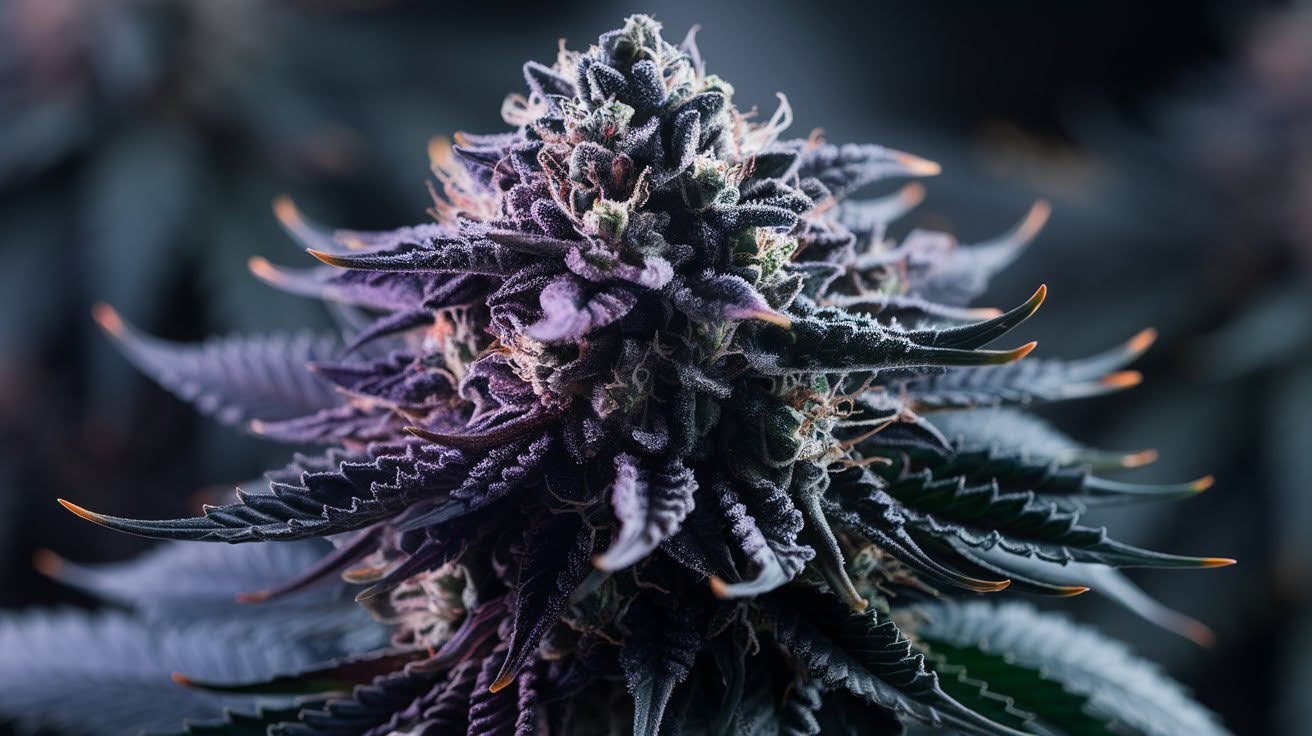
Black cannabis is the ultimate color expression. It happens when extremely high anthocyanin content meets perfect growing conditions. Colors get deeper during two key stages. First during flowering, then again during the curing process. The transformation can be dramatic.
Nearly black hues mean premium cultivation. This level of color development takes skill and the right genetics working together. Black Cherry and Ayahuasca Purple genetics can go this dark. These strains carry the genetic potential for maximum color expression.
Expect to pay more for true black cannabis. The rarity factor drives up market prices. But you’re paying for something genuinely special.
Orange and Yellow Accents
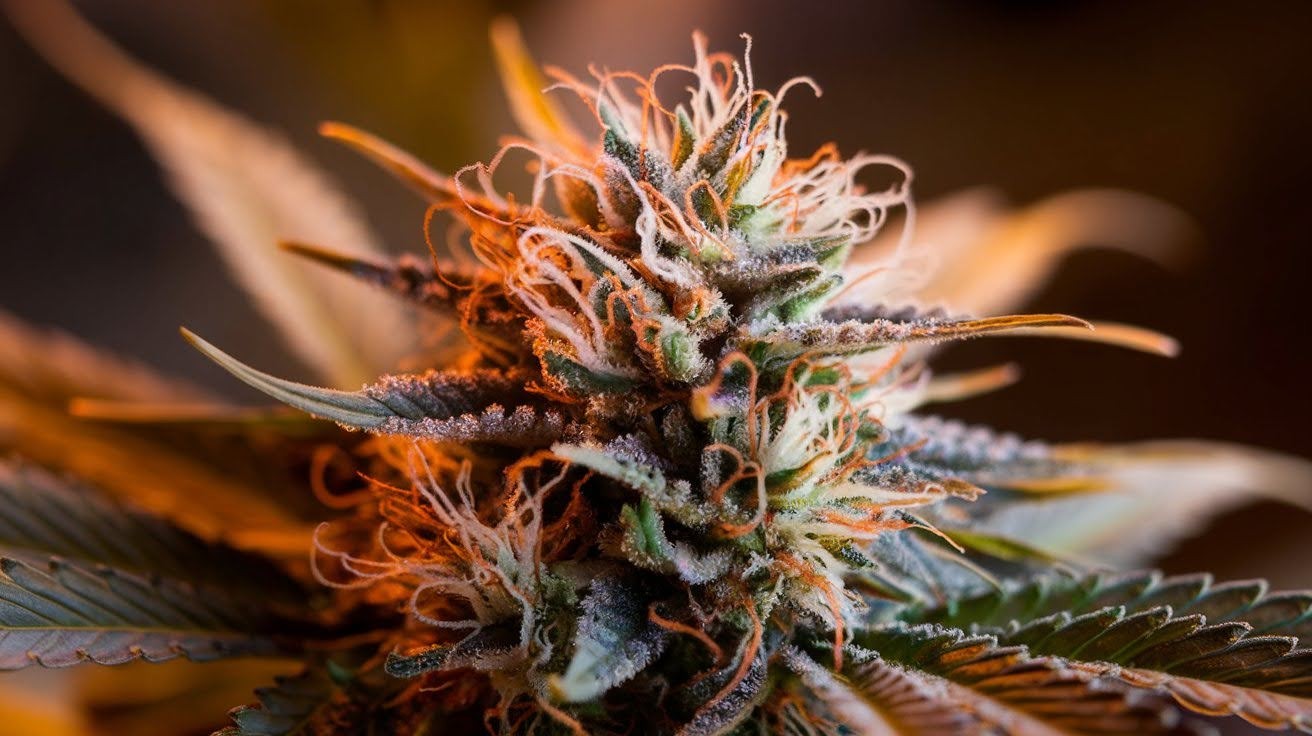
Those bright orange hairs aren’t just decoration. They’re pistils that show your bud reached proper maturity. Yellow undertones come from carotenoids. These pigments create autumn-like colors in cannabis. Think of fall leaves changing color.
Bright orange hairs signal good timing. They mean the plant was harvested when it should have been. Some strains naturally show more orange and yellow. It’s built into their genetics. Not all cannabis will express these colors equally.
White Cannabis
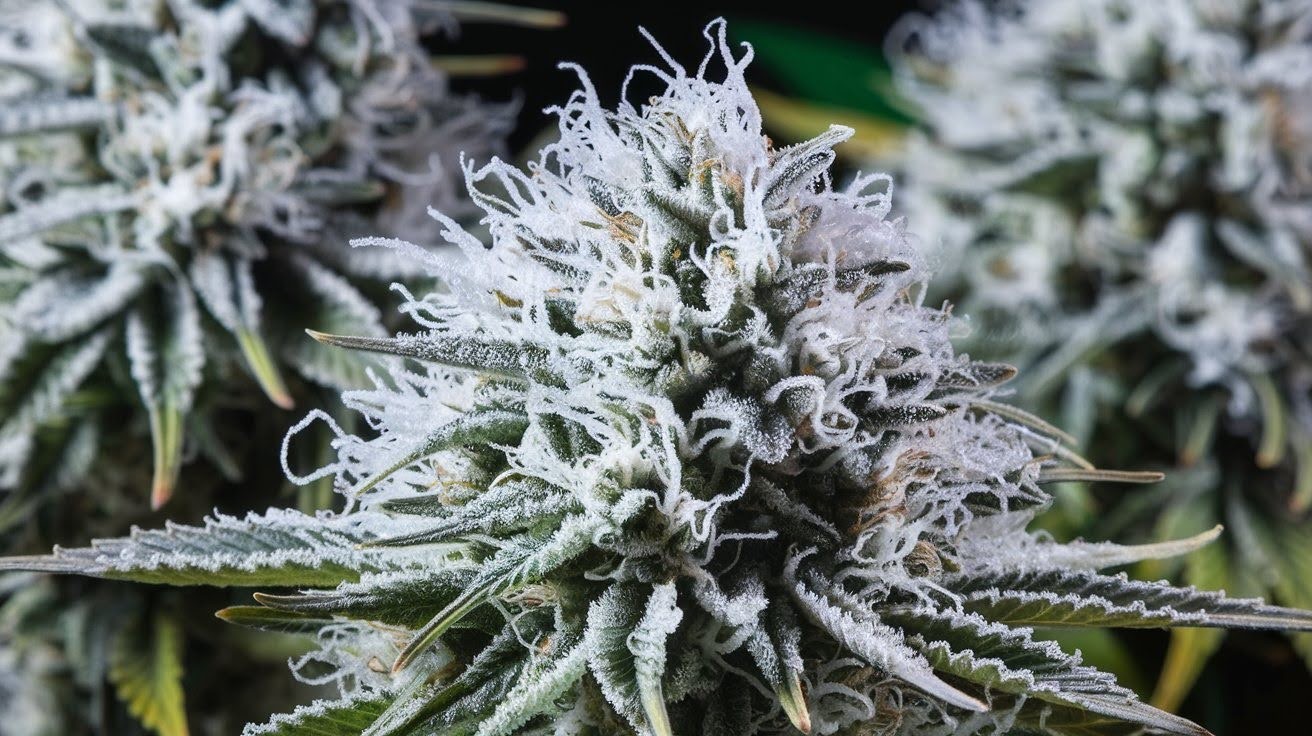
White cannabis isn’t really about pigments. Its heavy trichome coverage creates a white, frosty appearance. This white coating indicates high resin production. More resin often means higher potency potential. But it’s not a guarantee.
Trichomes go through stages as they develop. They start clear, turn milky white, then amber. Each stage affects the final effect. Think of crystal coverage as a skill marker. Good growers know how to maximize trichome production.
White Widow became famous for this exact trait. Its legendary frost coverage set the standard for what “white” cannabis should look like.
What Cannabis Colors Tell You About Quality and Potency
Let me burst a big bubble right now. Color doesn’t automatically mean your weed is stronger or weaker.
Color Myths vs. Reality: What Colors Don’t Tell You

Purple buds aren’t more potent than green buds. THC and CBD levels have nothing to do with pigment color. This is the biggest myth in cannabis. Want to judge potency?
Look at the crystals instead. Trichome coverage tells you way more about strength than any color will. Don’t fall for marketing hype about “exotic” colors. A rainbow bud might look cool, but it won’t necessarily get you higher.
Instagram photos don’t equal better effects. Science backs this up completely. Cannabinoid content works independently of pigmentation. They’re separate systems in the plant.
What Colors Reveal About Your Bud
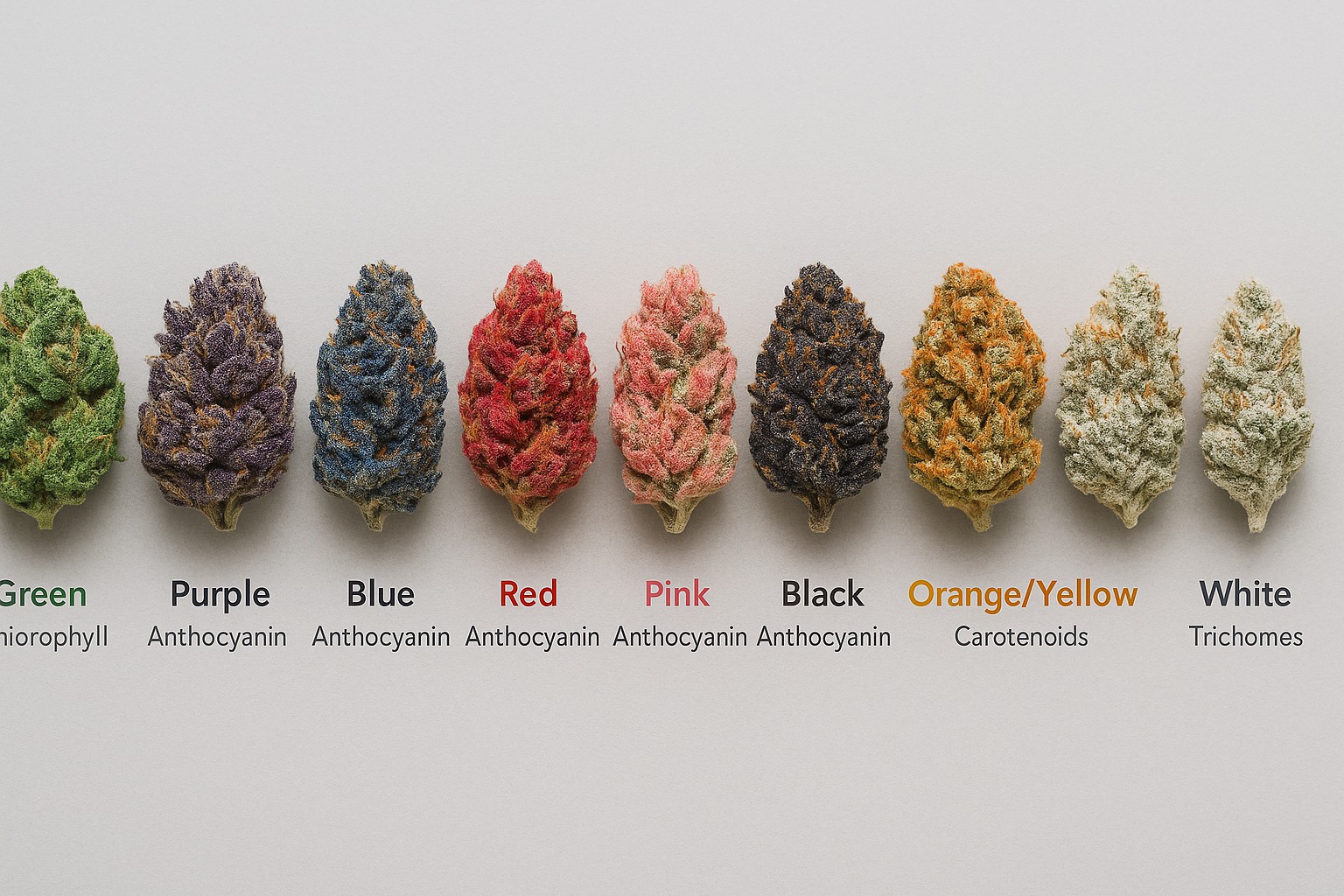
Colors are like a plant’s ID card. They tell you about genetic lineage and which strains might be in the family tree. Environmental factors show up in colors, too. Cool temperatures, soil pH, and nutrient levels all leave their mark.
It’s like reading the plant’s growing story. Even coloring suggests skilled cultivation. Patchy or uneven colors might mean growing problems. Consistent hues usually mean better technique.
Color development shows proper timing. Plants that change color naturally were likely harvested at the right moment. Vibrant colors suggest freshness. Dull, faded colors might mean old product or poor storage.
Fresh cannabis keeps its color longer. Bottom line: Colors tell you about genetics and growing conditions, not potency.
Warning Signs When Colors Indicate Problems
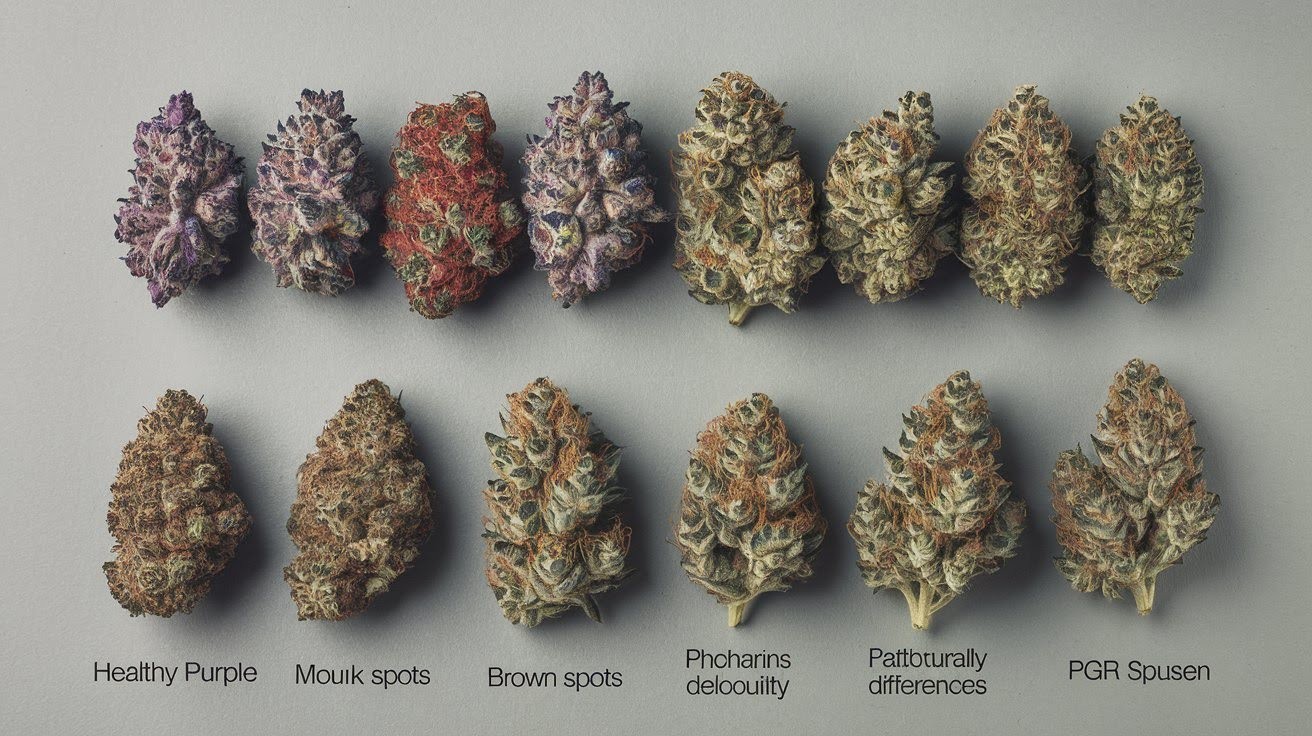
Not all red cannabis is created equal. Healthy genetic red looks are vibrant and alive phosphorus deficiency red looks dull and sickly. Brown spots are never a good sign. They could mean mold, overdrying, or nutrient burn during growing.
Stay away from anything with brown patches. Patchy coloring tells a story of problems. It might mean uneven growing conditions or weak genetics. Good cannabis shows consistent color throughout.
Faded colors suggest age or damage. UV light, poor storage, or just old products can drain colors. Fresh cannabis keeps its vibrant look.
Be suspicious of perfect uniformity. Sometimes it means PGR use, which creates unnatural growing patterns. Real cannabis has natural variation.
Reading Cannabis Colors Like an Expert
Your first glance should tell you a lot. Look for even color distribution and vibrant hues. Dull or patchy colors often mean cultivation problems. Don’t judge by color alone, though.
Combine what you see with smell and crystal coverage. All three together give you the real picture. Research your strain’s genetics beforehand. Some varieties naturally show certain colors.
Know what to expect from specific genetics. Remember that context matters too. Outdoor plants show different colors from indoor plants. Seasonal changes affect color development.
Building experience takes time. Learn to spot the difference between natural genetic coloring and artificial treatments. Your eye will get better with practice.
Conclusion
Now you know the real story behind colorful weed. Those vibrant purples, deep reds, and frosty whites all have meaning, just not always what you might expect. Remember the key point: Color shows you genetics and growing conditions, not potency. Look at trichomes for strength, colors for quality signs.
You can now spot the difference between natural genetic expression and problem indicators. Whether it’s healthy purple genetics or warning sign brown spots, you’ve got the knowledge to make smart choices.
Next time you see colorful weed, you’ll read it like a book. The colors tell the plant’s story, and you just learned how to understand the language.
Got questions about specific colors you’ve seen? Drop them in the comments below. I’d love to help you decode what you’re looking at.
Frequently Asked Questions
Does colorful weed mean it’s more potent than green cannabis?
No, color doesn’t determine potency. THC and CBD levels are independent of pigmentation. Trichome coverage is a better indicator of strength than any color.
What causes cannabis to turn purple or other colors?
Anthocyanin pigments create purple, red, and blue colors when activated by cool temperatures and specific genetics. It’s the same compound that makes blueberries blue.
Is colorful weed safe to smoke, or could it be artificially colored?
Nature, colorful weeds are completely safe. Look for even color distribution and research the strain’s genetics to distinguish natural coloring from potential artificial treatments.
Why is my colorful weed more expensive than regular green buds?
Colorful strains often cost more due to rarity, special genetics, and visual appeal. However, a higher price doesn’t guarantee better effects or quality.
How can I tell if colorful weed is high quality?
Check for even color distribution, vibrant hues, strong aroma, and good trichome coverage. Avoid dull, patchy, or faded colors, which indicate problems.


